It turns out that using the blackjack surrender option properly is actually a very smart play to make on some hands compared to an alternative play of, say, hitting or standing. For the uninitiated, surrender works like this:
After considering your initial two-card hand and the dealer’s upcard, if you think your chance of winning the hand is very poor, you can forfeit playing your hand and surrender (or give up) half of the amount of your wager. You indicate to the dealer when you want to surrender in one of two ways:
- In some casinos, you must verbally announce to the dealer that you want to surrender your hand by saying “surrender.”
- Other casinos have implemented a hand signal for surrender, which is to draw an imaginary line from left to right on the felt with your index finger.
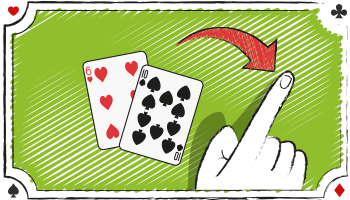
Either way, if you decide to surrender your hand, the dealer will remove half of your bet then scoop up your initial two cards and place them in the discard tray. Essentially, when you surrender, you forfeit the right to play out your hand and you immediately lose half of your bet.
There are two types of Blackjack surrender: ‘Late Surrender‘ and ‘Early Surrender‘
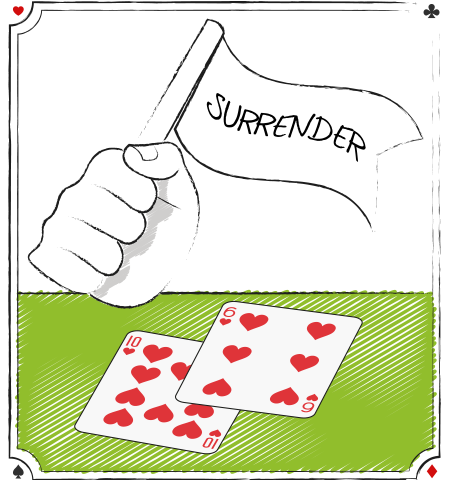
Late Blackjack Surrender
With late surrender, you can only surrender your hand after the dealer peeks at her hole card when she shows an ace or a ten, to determine if she has blackjack. If she has blackjack, the surrender option is no longer available, and you will lose your entire bet unless you also have a blackjack. When you use late surrender correctly, it will reduce the house edge by about 0.07% in multiple-deck games.
The basic strategy for late surrender is summarized below in a black and white table followed by a color-coded strategy chart, for all games.
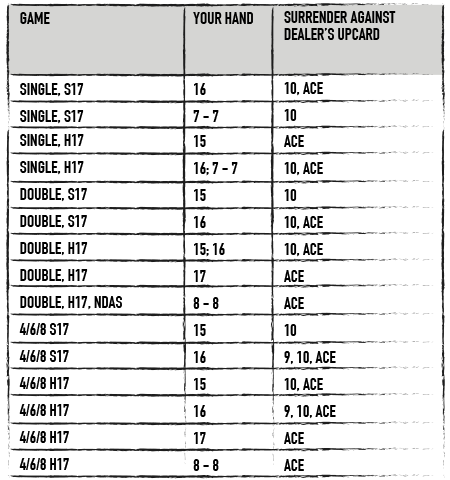
SINGLE DECK WITH SOFT 17
Dealer’s Upcard
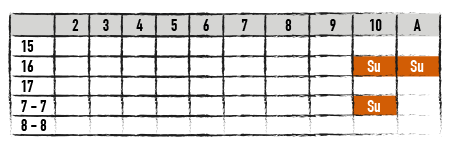
SINGLE DECK WITH HARD 17
Dealer’s Upcard
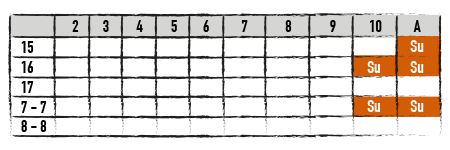
DOUBLE DECK WITH SOFT 17
Dealer’s Upcard
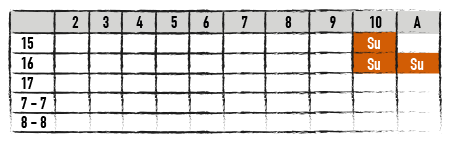
DOUBLE DECK WITH HARD 17
Dealer’s Upcard
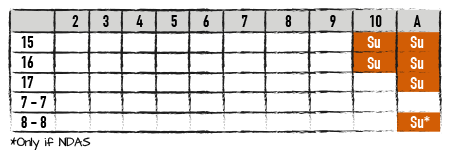
4/6/8 DECKS WITH SOFT 17
Dealer’s Upcard
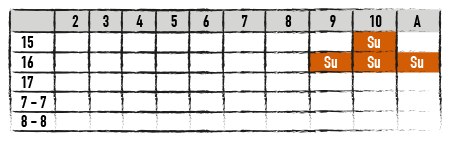
4/6/8 DECKS WITH HARD 17
Dealer’s Upcard
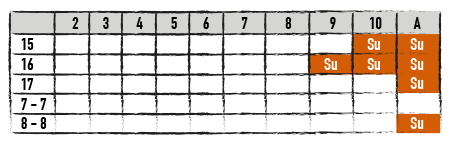
Examples:
- Single-deck game with hard 17, you hold 16, dealer’s upcard is a 10. You should surrender.
- Double-deck game with soft 17, you hold 15, dealer’s upcard is an ace. You should hit (surrender only against dealer’s 10).
- Six-deck game with soft 17, you hold 16, dealer’s upcard is a 9. You should surrender.
- Six-deck game with hard 17, you hold 8-8, dealer’s upcard is an ace. You should surrender.

Early Blackjack Surrender
Early surrender is rarely offered in U.S. casinos and is more prevalent in European and Asian casinos where dealers do not take a hole card until after all players have acted on their hands. With the early surrender option, players can surrender their hand to a dealer’s ace and/or ten-value upcard before the dealer checks to determine if she has a blackjack. Early surrender is a much more favourable rule for players than late surrender. Early surrender against the ace gains you 0.39 %, and against the 10, it’s 0.24 %, making the total value to the player 0.63% for a six-deck s17 game.
The basic playing strategy for early surrender in a multiple-deck game (soft 17) is different than the strategy for late surrender.
When early surrender is offered, you should surrender these hands:
- Against a dealer ace, surrender hard 5 to 7 (including 3s), and 12 to 17 (including 6s, 7s, and 8s).
- Against a dealer ten, surrender hard 14 to 16, including 7s and 8s.
- Against a dealer 9, surrender hard 10-6 and 9-7 (but not 8s).
Note that in some European and Asian (especially Macau) casinos, you can only early surrender against a dealer’s ten upcard not against the ace.
MATH OF SURRENDER
You should surrender a hand when your chance of winning is less than one out of four hands, i.e., your expected loss is worse than 50%. This means that statistically if playing the hand has less than a 25% chance of winning and consequently greater than a 75% chance of losing, you will save money in the long run by surrendering the hand instead.
MODERATING NEGATIVE SWINGS
Besides reducing the house edge, surrender also has this benefit: it will stabilize your bankroll, meaning surrender will flatten the fluctuations in your bankroll, compared to a game where surrender is not offered and you have to play all your hands to completion.
Additional Tips
- Many casinos that offer surrender don’t advertise it; therefore, don’t be afraid to ask the floor person or dealer if it’s available.
- Don’t be surprised if your fellow players look at you like you are some kind of kook when you surrender.
|
PAIR SPLITTING STRATEGY
|












